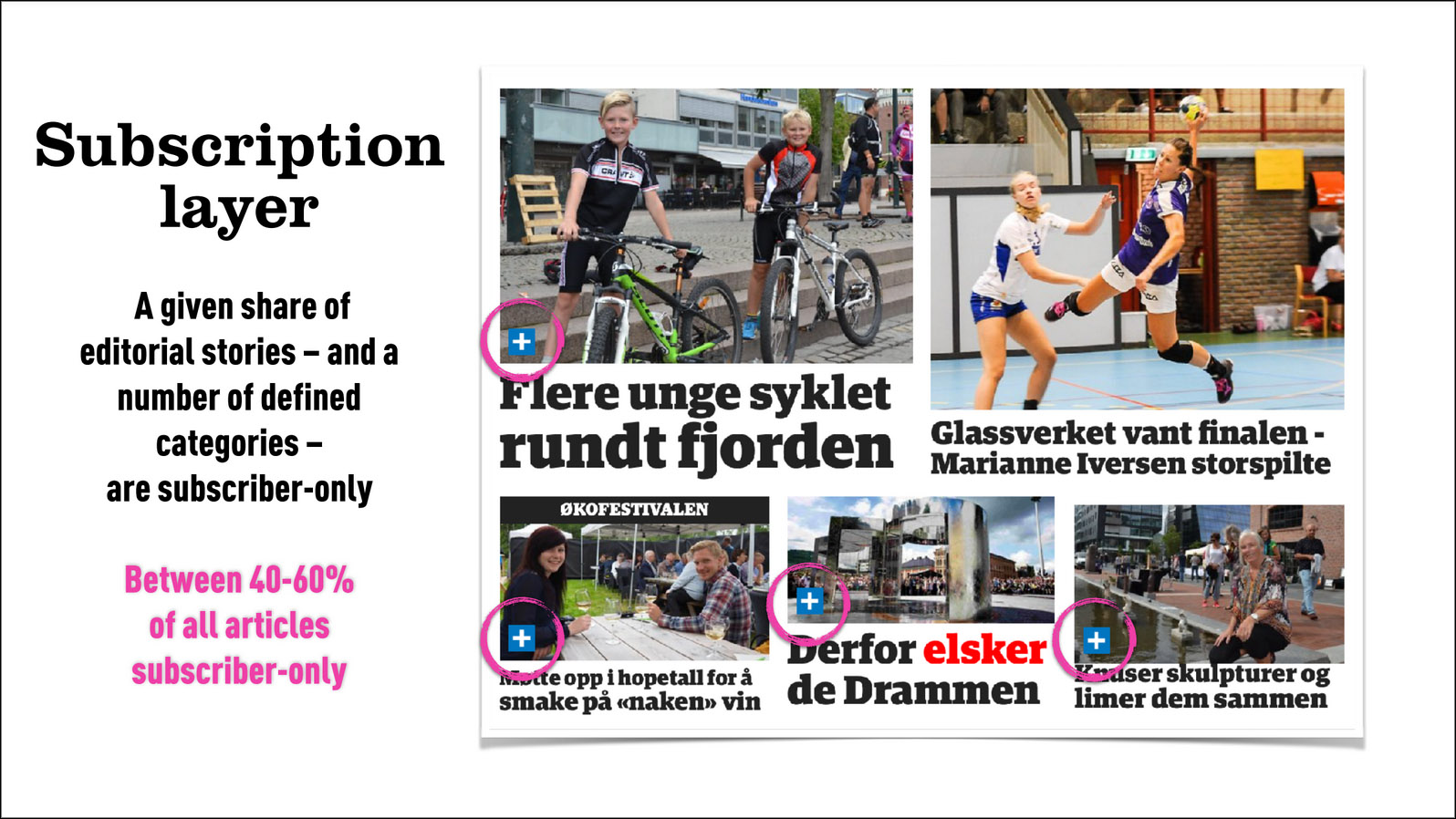Since 2013, Norway's largest local media company has been successfully capitalising on digital subscriptions using its strengths as a publisher of 62 Norwegian newspapers.
Noticing a steady decline in advertising revenue, Amedia launched aID (Amedia ID) in April 2014, a log-in system that gives readers access to digital content and is commonly used across all its titles. As part of a three-stage plan, the publisher has been successfully converting existing print subscribers to digital, while collecting user data on registered non-subscribers, and this approach has given them a platform on which to up-sell while reaching out to a younger generation.
"Our company is a digital success story," said Pal Nedregotten, executive vice president, digital, Amedia, explaining the titles now reach a combined 1.3 million Norwegians everyday – over a quarter of the country's adult population.
"In 2013, the company had 15 years of experience with online newspapers, with 20 per cent year-on-year digital advertising growth, but the reach we were chasing was insufficient, and the digital advertising income in Norway was unable to finance local journalism as we had known it up to that point."
The plan was to get these customers to build digital habits, hoping that this strategy would lead to growth and new audiencesPal Nedregotten, Amedia
As a result, Amedia strived to turn its journalism into a business model which would enable them to profitably reach more people faster, while keeping the quality of journalism at the centre of focus.
Stage 1: Converting existing paper subscribers to digital
In April 2014, Amedia began to incentivise 480,000 paying print subscribers to convert to digital by giving them access to exclusive content online – around 40 to 60 per cent of the stories were unavailable to the general public depending on the publication.
"We had a subscription economy that was nose diving fast at about 10-15 per cent, so the plan was to get these customers to build digital habits, hoping that this strategy would lead to growth and new audiences – we couldn't wait as we were losing loyal readers," Nedregotten said.
"The online log-in system was designed to give paying subscribers a reason to still be a subscriber, and create digital habits to help them find value in an online edition."
Each individual newspaper had their own pricing points and subscriber packages, but they generally gave customers three options of paid readership: complete access to print and digital, weekday digital access plus weekend print readership, and a pure digital subscription.

With stories updated all the time, subscribers were also able to give five family members access to their account, which Amedia hoped would encourage more people to find value in a digital subscription.
Stage 2: Encouraging non-subscribers to register for a log-in
Amedia offered non-subscribers to register for a free trial period, where they would get an aID log-in to access exclusive material on the site.
Once the free trial expired, the log-in would still be valid and Amedia was then able to capture data and monitor what they were reading, when and how often, in order to develop a better understanding of their user habits.
As a logged-in user, readers were unable to see the material exclusively available to subscribers, but could comment on stories, and receive more personalised campaigns that encouraged them to subscribe.
By gaining a mobile number, email address, name and age for every registered user, Amedia began to build an informative record of who was reading their stories, which they have been using to produce more audience-specific content for over 700,000 aID users.
Stage 3: Move users up the value chain
The final stage was to move registered users up the value chain through a mixture of cross and up-selling, which meant getting people who weren't reading articles while logged into their accounts to do so, and getting the logged-in users to become subscribers.
"Registration is worthless without usage," he said.
"In autumn last year, we had roughly 300 subscriptions purchased every 24 hours, but when we did a campaign on Black Friday, we got 4,600 subscriptions – we had an initial subscriber discount on the day, that rose over a while to full price."
And these campaigns have continued to work well for the publisher, with 87 per cent of all subscription sales having been purchased online.
Direct access to registered users has enabled them to have more of a personalised relationship with readers, encouraging them to move up the chain to become a subscriber.
For example, in January this year, Amedia offered a deal giving registered users five weeks of discounted online access, rising to full price over time. In the first 21 days, they gained over 16,000 digital subscribers, and they have found readers are getting younger all the time, many of whom have not read the printed products.
"This is sustainable, but we need to be continually evolving, working with the product," he said, explaining the company's revenue is equally split between advertising and subscription revenue.
"We are testing different models such as regional and national subscriptions for existing customers, trying to figure out which packages will work in the future but we will know more in the next year or so – we have a significant investment in data strategy and that is something we are looking at holistically."
Free daily newsletter
If you like our news and feature articles, you can sign up to receive our free daily (Mon-Fri) email newsletter (mobile friendly).
Related articles
- What AI can do for your newsroom: tips from Ring Publishing's latest handbook
- Five key takeaways from the UK select committee on the future of news
- How young leaders can shape the future of the media industry
- Seán Wood, CEO of Positive News, on fighting news avoidance
- New app uses geolocation to help local publishers boost ad revenue










